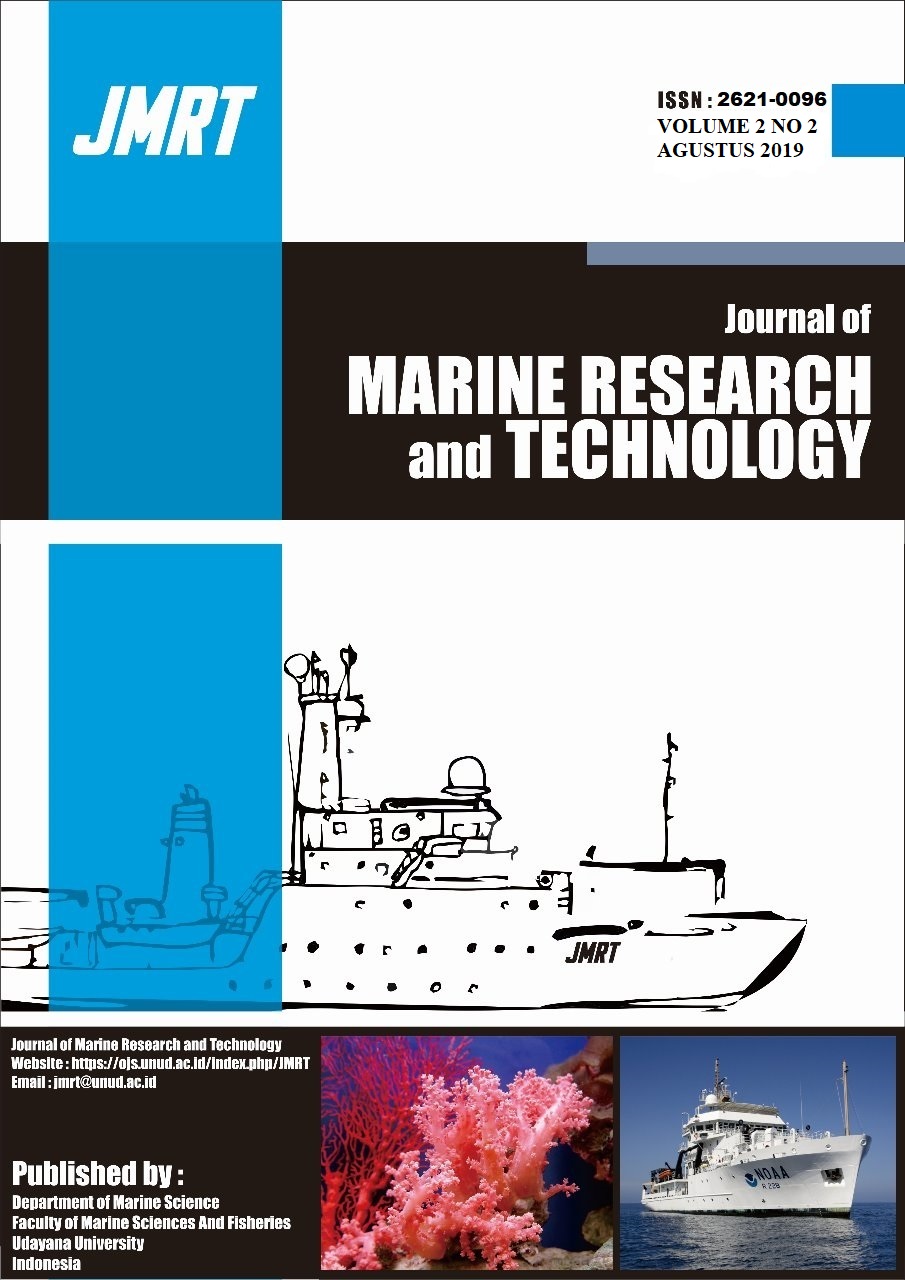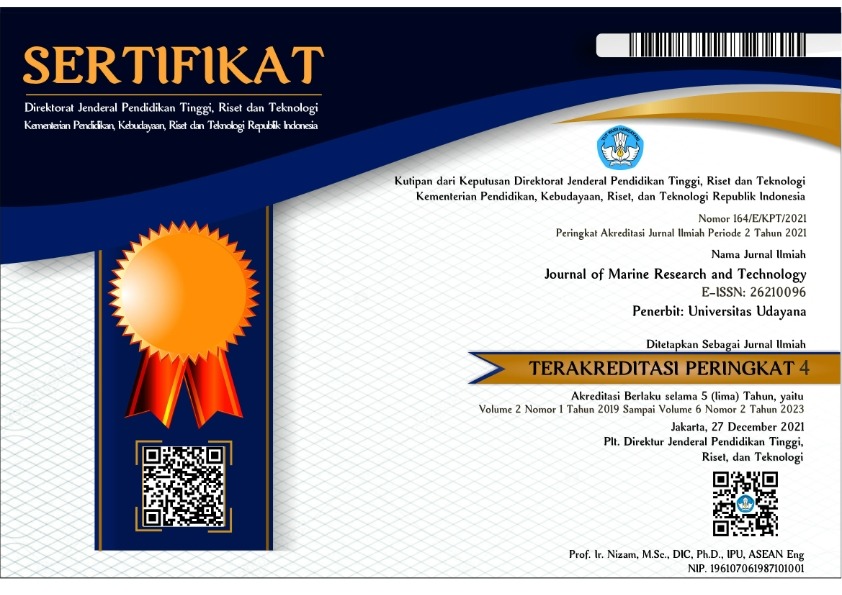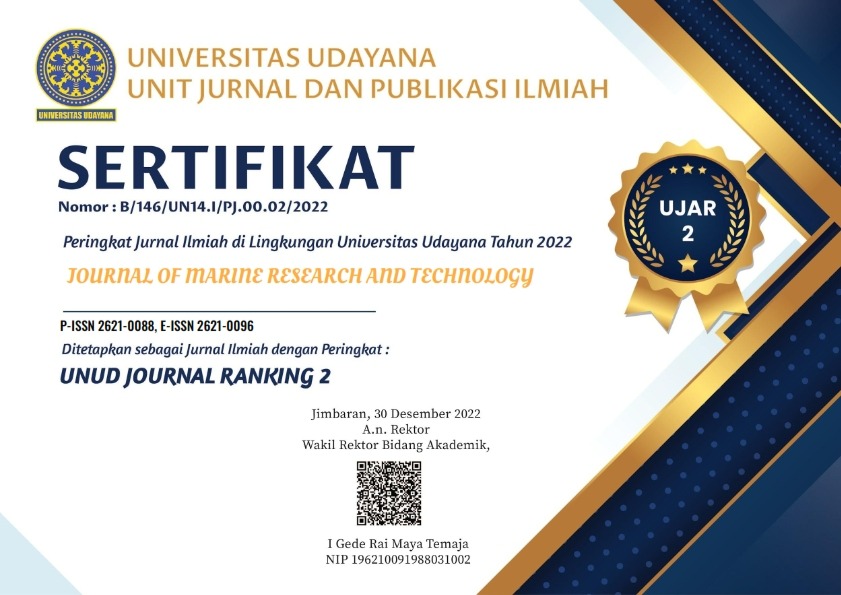Kandungan Bahan Organik di Sedimen Pada Budidaya Abalon Haliotis squamata dengan Sistem Co-Culture di Pantai Geger Bali
Abstract
Marine cultivation is increasing to meet market demand. One of Indonesia's aquaculture commodities is abalone (Haliotis squamata). Improvement of marine cultivation business should pay attention to the impact on the environment. Marine cultivation one of system that considers environmental sustainability is IMTA (Integrated Multi Trophic Aquaculture). The cultivation business gives effect to the water and sediment quality at the cultivation. The purpose of this research is to know whether there is difference of sediment organic matter in cultivation of abalon Haliotis squamata between before and after IMTA system. This research was conducted for 45days at Geger Beach, Badung regency, Bali. The method used in this research is Loss-on-ignition method. The results were analyzed by T-test using SPSS. The results of this research showed that the sediment organic matter before the cultivation process in the sediment was 29,1622% and after 45 days the cultivation process took place with an organic matter content of 31,0052%. The results of statistical analysis of the T-Test that sediment organic matter between before and after 45 days of cultivation process had no significant difference (P> 0.05).
Downloads
Copyright Notice
The copyright to this article is transferred to Journal of Marine Research and Technology (JMRT). The copyright transfer covers the exclusive right and license to reproduce, publish, distribute and archive the article in all forms and media of expression now known or developed in the future, including reprints, translations, photographic reproductions, microform, electronic form (offline, online) or any other reproductions of similar nature.






